As an avid reader, I find immense joy in both fiction and nonfiction books. My to-be-read (TBR) list is a growing compilation of intriguing titles, often recommended by friends, discovered in online forums, or handpicked from the esteemed New York Times Best Seller lists. The New York Times curates best-selling lists across a diverse range of genres, but for the purpose of this blog post, our spotlight will be on the “Advice, How-To & Miscellaneous” genre.
In March 2024, a fresh batch of books made their mark on the New York Times Best Seller list in this genre. This blog post aims to serve as a curated guide to these newly minted bestsellers. Not only will we list these books, but we will also provide a concise summary for each one, offering you a glimpse into their content and perhaps helping you discover your next captivating read. So, let’s dive in and explore these literary gems!
The Holy Grail of Investing by Tony Robbins and Christopher Zook
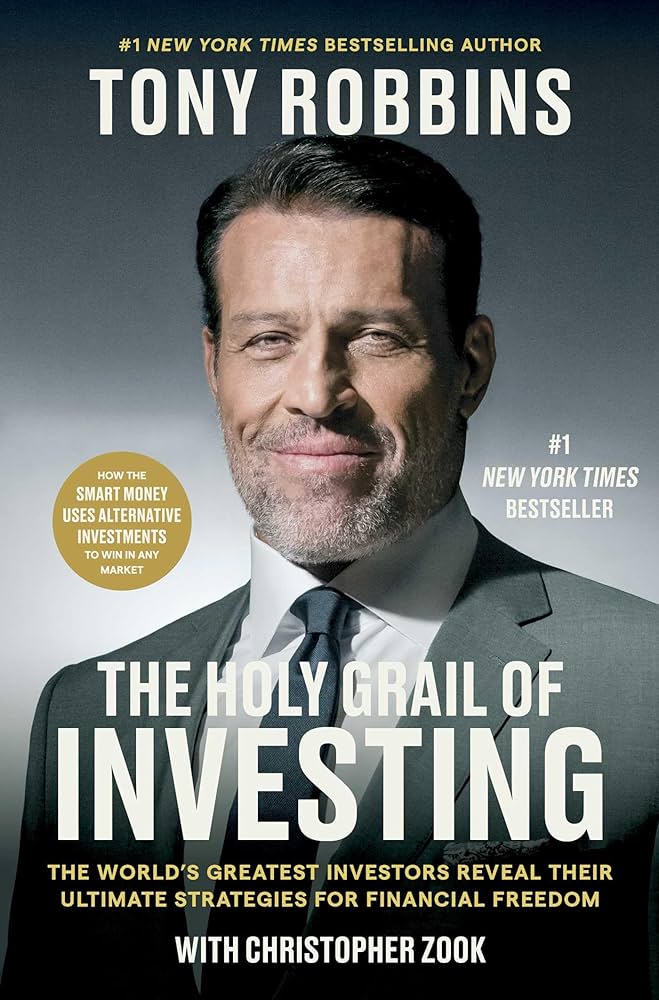
“The Holy Grail of Investing” isn’t just about accumulating wealth — it’s about attaining financial independence with a feeling of purpose and fulfillment. It’s a game-changer for many, teaching how to overcome common pitfalls of investing, how to diversify portfolios, how to optimize returns, and how to align investments with values and goals.
Here’s a brief summary of the main points:
Part 1: The Mindset of a Successful Investor This part explains the importance of having the right mindset for investing, and how to overcome the psychological barriers that prevent most people from achieving financial success1. It discusses the power of beliefs and how they shape our reality. The authors argue that we need to adopt empowering beliefs that support our financial goals.
Part 2: Understanding the Investment Landscape This chapter introduces several types of investments, including stocks, bonds, real estate, and alternative assets. It provides a clear summary of each, alongside their potential risks and rewards.
Part 3: Risk Management Strategies Robbins presents principles like diversification and asset allocation as ways to reduce risk. He describes how these techniques can protect investors from market volatility and unexpected economic downturns.
Part 4: Achieving Financial Freedom Here, Robbins describes a step-by-step plan for attaining financial freedom. He stresses the necessity of setting clear financial goals, creating a budget, and spending sensibly.
In addition to these, the book also covers advanced strategies like income tax optimization, control, and market timing for more experienced investors.
Untangle Your Emotions by Jennie Allen
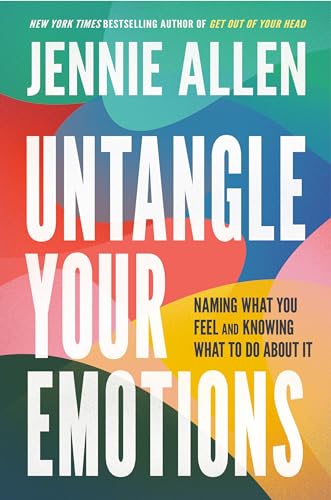
“Untangle Your Emotions” is a spiritual guide to understanding and managing your feelings. It views emotions not as something to be fixed, but as an avenue for deeper connection with God and the people around you.
Here’s a brief summary of the main points:
Understanding Emotions The book starts by acknowledging that many people struggle with understanding and managing their feelings. They either avoid emotions entirely, let them spiral out of control, or try to quickly “fix” difficult emotions. However, the book argues that feelings serve a purpose and connect you to God, others, and yourself.
Emotional Awareness The book emphasizes the importance of building emotional awareness. It suggests a five-step process to know what you feel and what to do about it. This involves slowing down, naming each of your emotions, and understanding what to do next.
Debunking Myths The book debunks the myth that feelings are sinful. It argues that emotional maturity leads to deeper connection with God and others.
Emotional Health The book provides practical steps for achieving emotional health. It applies biblical wisdom and therapeutic research to help you manage overwhelming emotions and access the ones you’ve buried or suppressed.
Connecting with God The book suggests that instead of trying to conceal or control our difficult emotions, we can intentionally notice, name, and connect with our feelings in ways that lead to deeper connection and lasting health.
Do the New You by Steven Furtick
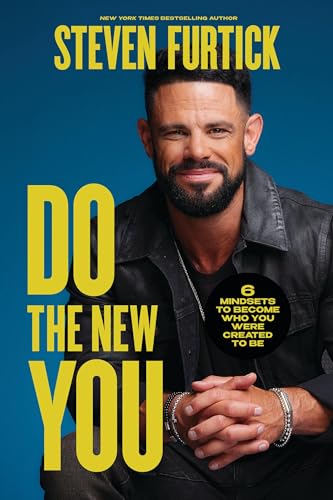
“Do the New You” is a spiritual guide to understanding and managing your feelings. It views emotions not as something to be fixed, but as an avenue for deeper connection with God and the people around you.
Here’s a brief summary of the main points:
Mindset Transformation The book emphasizes the importance of mindset transformation for personal growth and self-improvement. It suggests that by adopting new perspectives and cultivating a growth mindset, you can overcome self-limiting beliefs and embrace change and adversity as catalysts for personal development.
Practical Strategies “Do the New You” provides practical strategies for personal growth and self-improvement. It offers guidance on setting and achieving goals, building healthy relationships, and discovering your purpose. It also emphasizes the significance of resilience, perseverance, and continuous learning in sustaining long-term growth and transformation.
Power of Mindsets The book explores the power of mindsets and how they shape our actions, emotions, and overall well-being. It argues that mindset transformation is the catalyst that propels us towards positive change and unlocks our true potential.
Developing a Growth Mindset The book provides strategies to cultivate a growth mindset. It encourages readers to stay curious, open-minded, and to cultivate a love for learning.
Living Out Your God-given Identity The book speaks directly to the challenge of living out your authentic, God-given identity and calling. It unpacks practical mindsets to shift from who you are today to where God is leading you.
Mostly What God Does by Savannah Guthrie
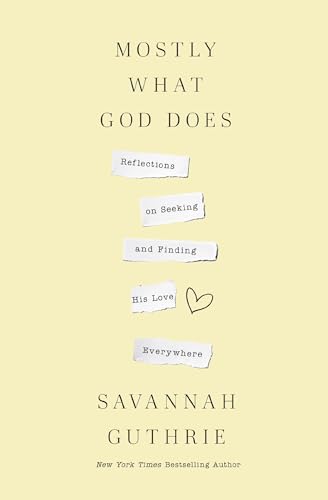
“Mostly What God Does” explores the profound and often unexpected ways faith can manifest in daily life. Through personal insights and reflections, it invites you to consider how the six essentials of connection to God – love, presence, praise, grace, hope, and purpose – color and shape every facet of your experience. It’s about developing a life of faith founded on hope, community, gratitude, compassion, and pursuing purpose above selfish desires. It emphasizes choosing to believe in redemption, mercy, and justice even when full explanations remain elusive. A life centered on God’s love for all people is held as most meaningful.
Here’s a brief summary of the main points:
Introduction Savannah Guthrie, an acclaimed journalist and co-anchor of the NBC News show “Today,” brings her unique voice and perspective to this collection of reflections on faith and spirituality. “Mostly What God Does” is a poignant journey through Guthrie’s experiences and insights, touching on themes of love, hope, and finding meaning in life’s ups and downs.
Chapter 1: A Mother’s Love Guthrie opens the book with a heartfelt reflection on the unconditional love of a mother. She explores the profound bond between parent and child and the ways in which it reflects the love of God.
Chapter 2: Finding Strength in Faith In this chapter, Guthrie delves into the role of faith in overcoming challenges and finding strength in difficult times. She shares personal anecdotes and stories from others who have found solace and courage through their faith.
Chapter 3: The Power of Forgiveness Forgiveness is a central theme in “Mostly What God Does.” Guthrie explores the transformative power of forgiveness, both in relationships with others and in our relationship with ourselves.
Chapter 4: Embracing Imperfection In this chapter, Guthrie reflects on the beauty of imperfection and the freedom that comes from embracing our flaws. She shares personal stories of learning to let go of perfectionism and finding joy in the messy moments of life.
Chapter 5: The Gift of Grace Grace is a recurring theme throughout the book, and in this chapter, Guthrie explores the concept of receiving and extending grace in our daily lives. She shares stories of unexpected acts of kindness and the profound impact they can have.
Supercommunicators by Charles Duhigg

“Supercommunicators” is a guide to connecting more genuinely and efficiently with other people. It provides practical guidance for improving communication skills, with a focus on social connection and emotional dynamics. It’s about recognizing different types of conversation and learning how to match them, so we can become better listeners and more effective communicators.
Here’s a brief summary of the main points:
Understanding Conversations The book explains that successful conversations follow from a concrete set of skills. It identifies three kinds of recurring conversations and provides strategies to align with others in any conversation.
The Power of Alignment The root of all great communication is alignment with other human beings. The book provides examples of how to match one another in conversation to help everyone feel heard, validated, and get what they want.
Emotional Dynamics Supercommunicators recognize that conversations are complex emotional experiences. They understand that vulnerability and trust are essential for human connection and that recognizing and navigating complex emotions is key to effective communication.
Mastering Conversations One of the key skills of a supercommunicator is the ability to be an effective listener. The book provides tips for asking open-ended questions and reflecting back what you’ve heard. It also emphasizes the importance of storytelling in communication and provides examples of how to use stories to connect with others and convey complex ideas.
The Role of Intuition and Empathy The book explores the role of intuition and empathy in effective communication. It suggests that by understanding these nuances, we can learn to communicate more effectively, build stronger relationships, and achieve our goals more easily.
“Worthy” by Jamie Kern Lima

“Worthy” by Jamie Kern Lima transcends the realms of self-help literature, offering a roadmap to self-discovery and empowerment. By embracing imperfection, cultivating gratitude, and fostering self-compassion, readers embark on a transformative journey towards embracing their inherent worthiness.
Here’s a brief summary of the main points:
Introduction In “Worthy”, Jamie Kern Lima shares her journey towards embracing her inherent worth and unleashing her full potential. She guides readers through this transformative journey with her poignant narrative and insightful anecdotes.
Chapter 1: The Seed of Worthiness The journey to self-worth begins with acknowledging our inner dialogue. Lima explains how our thoughts shape our perceptions and reality. By recognizing and reframing negative self-talk, we lay the groundwork for a profound shift in mindset.
Chapter 2: Embracing Imperfection Lima champions the beauty of imperfection. She encourages readers to relinquish the pursuit of perfection and instead celebrate their authenticity. She illustrates how embracing imperfection fosters growth and authenticity.
Chapter 3: Unveiling Your Inner Strength Lima explores the concept of resilience as a cornerstone of self-worth. She shares inspiring stories of individuals who have overcome adversity, illustrating how resilience cultivates inner strength and fortitude.
Chapter 4: Cultivating Gratitude Lima extols the transformative power of gratitude in fostering a sense of worthiness. She invites readers to cultivate a daily gratitude practice, highlighting its profound impact on mindset and overall well-being.
Visions of Flesh and Blood by Jennifer L. Armentrout and Rayvn Salvador

“Visions of Flesh and Blood” is a comprehensive companion guide to the “Blood and Ash” and “Flesh and Fire” series, written by Jennifer L. Armentrout and Rayvn Salvador
Here’s a brief summary of the main points:
Comprehensive Companion Guide “Visions of Flesh and Blood” is a comprehensive companion guide that provides background, history, reader-favorite information, art, and reference materials. It’s combined with original short stories and scenes from some of the world’s most beloved characters, as well as never-before-seen visual enticements.
Told from Miss Willa’s Perspective The book is told from the point of view of Miss Willa herself. The compendium acts like research material but reads like a journal and cache of personal notes. This allows the reader to revisit the characters and history they so love yet view things in a different way.
A Must-Add Addition to the Series “Visions of Flesh and Blood” is a must-add addition to the series that any “Blood and Ash” or “Flesh and Fire” fan will enjoy.
“Visions of Flesh and Blood” is a treat for the senses. It’s a comprehensive guide that allows fans to delve deeper into the world of “Blood and Ash” and “Flesh and Fire”, providing a new perspective on the beloved characters and their stories.
We’ve Got Issues by Phillip C. McGraw
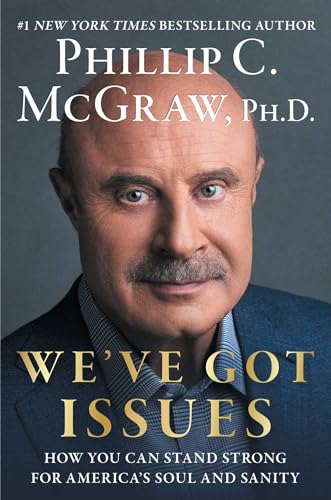
“We’ve Got Issues” is a thought-provoking exploration of societal challenges and individual empowerment. It encourages readers to confront uncomfortable truths and drive positive change in their communities.
Here’s a brief summary:
Understanding America’s Cultural Crisis Dr. Phil employs his signature no-nonsense approach to meticulously analyze America’s cultural crisis. He offers practical, empirically based, action-oriented strategies to restore our country to societal health, sanity, and power.
Addressing the Tyranny of the Fringe The book addresses mainstream Americans’ need to “push back” against the “Tyranny of the Fringe’s” dangerous level of divisiveness. It provides sensible and urgently needed advice supported by the latest social, medical, and psychological scientific findings.
Promoting Core Values Dr. Phil emphasizes the importance of reclaiming shared values and rejecting nonsense. He believes that this is not just a national imperative but a personal responsibility.
From Cancel Culture to Counsel Culture The book presents a constructive vision for moving from cancel culture to counsel culture, from fear to acceptance, and from victimhood to a meritocracy. It provides a narrative that makes sense.
Ten Working Principles for a Healthy Society Dr. Phil provides ten working principles for a healthy society. He provides the tools for mainstream America to fight back against the forces of division.
Slow Productivity by Cal Newport
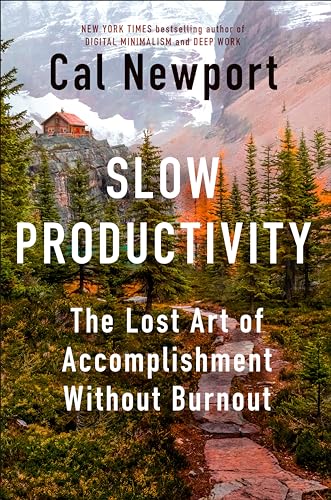
“Slow Productivity” explores the concept of achieving meaningful results without succumbing to the pressures of constant busyness and burnout. It provides a clear roadmap towards a more sustainable, fulfilling way of working.
Here’s a brief summary:
Pseudo-productivity The book tackles the issue of “pseudo-productivity,” where visible activity is mistaken for real productivity, leading to a cycle of endless tasks and burnout.
Three Pillars of Slow Productivity The book offers a holistic new philosophy for a better relationship with work that allows us to make meaningful contributions at a sustainable pace. This philosophy is rooted in three pillars: fewer commitments, taking our time, and insisting on delivering high-quality work.
Time Affluence One of the core concepts is “time affluence,” which refers to the subjective perception of having enough time to participate in personally important activities. Newport contends that this impression of temporal luxury is necessary for profound, creative labor.
Challenging Fast-Paced Work Culture The book challenges today’s fast-paced work culture. Newport’s primary concept is that genuine productivity is achieved by performing better work at a slower pace, rather than accomplishing more in less time.
From Quantity to Quality Newport questions the concept that speed and efficiency are the ultimate aims, arguing that a slower approach might result in higher-quality product and a more enjoyable work experience. This approach contrasts with conventional productivity strategies, which often favor quantity over quality and instant results over long-term success.
Momma Cusses by Gwenna Laithland
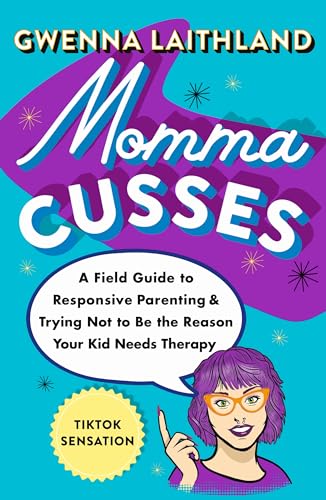
“Momma Cusses” is a guide to understanding and managing your feelings. It views emotions not as something to be fixed, but as an avenue for deeper connection with your children.
Here’s a brief summary:
Introduction “Momma Cusses” is a refreshingly honest and humorous take on parenting, offering a relatable perspective that validates the experiences of frustrated, overwhelmed, and exhausted parents everywhere.
Responsive vs Reactive Parenting In “Momma Cusses”, Gwenna uses her signature style of snark and sarcasm to explain her interpretation of responsive parenting vs. reactive parenting and outline the steps she takes to raise her kids. Whether you are a parent or someone who has had a parent, we all need to learn how to handle our emotional spirals responsively.
Scenarios Now we can all be in it together by tackling some of the hilarious yet all-too-real scenarios Gwenna outlines in her book, including:
- YOU WILL LOSE YOUR SH*T: Mom guilt vs. mom shame
- ARE YOU YELLING OR ARE YOU JUST BEING LOUD?: Get in control of your emotions
- THE BIG FEELS LOOP-DE-LOO: Get in control of their emotions
Accessible and Rooted in Reality Accessible, digestible, and rooted in reality, “Momma Cusses” helps readers with navigating family dynamics and cultivating emotional resilience for everyone.
Elevate and Dominate by Deion Sanders

“Elevate and Dominate” is a playbook for anyone who wants to conquer their field. It goes over each principle with deeply personal stories, useful advice, and steps that can be taken right away. It provides the direction, motivation, and action required for anyone to dominate and win at life.
Here’s a brief summary:
Introduction The book sets the scene for Sanders’ story about what drives him. He reflects on his journey from being a young, driven player to becoming a sports legend and mentor.
21 Strong Principles The book boils down Sanders’ success into 21 strong principles. It isn’t just a guide to being great at sports; it also has advice on how to win in all of life’s fights.
Principle 1: Dream Big Sanders starts with the basic idea that you should dream big. He talks a lot about how important it is to set big goals and have faith that you can reach them, no matter what.
Principle 2: Work Ethic Sanders talks about how important work ethic is to success. He talks about his own routine and discipline and makes the case that ability alone is not enough.
Principle 3: Mind Over Matter Sanders talks about how attitude can help you get through tough situations. He talks a lot about how important it is to have mental toughness, focus, and resolve.
Principle 4: Build Your Team Sanders says that you should be very selective about the people you let into your personal and work life because they are so important. He talks about how important it is to have mentors, friends, and a family that is there for you.
Principle 5: Face Your Fears Sanders talks about how fear is always there and how important it is to face it head-on. He uses detailed stories to show how facing his fears, instead of running away from them, has been very important in his life.
How to Walk into a Room by Emily P. Freeman

“How to Walk into a Room” is a guide to help discern the how, when, and what now of walking out of rooms and into new ones with peace, confidence, and a whole heart.
Here’s a brief summary:
Understanding Life’s Rooms The book explores the metaphor of life as a house, where every room holds a story. It addresses the question of what to do when a room we’re in is no longer a room where we belong.
Navigating Big Decisions Freeman offers guidance to help us recognize when it’s time to move on from situations that no longer fit, allowing us to find new spaces where we can flourish and grow.
Uncovering Silent, Nuanced, and Hidden Arrows The book helps us begin to uncover the silent, nuanced, and hidden arrows for anyone asking questions like: How do I know if it’s time to move on? What if I stay and nothing changes? What if I leave and everything falls apart?.
Discerning Peace and Avoidance Freeman helps readers to know and name the caution flags in their current spaces, discern the difference between true peace and discomfort avoidance, navigate endings even when there is no closure, find peace for when you feel ready but it isn’t time, and courage for when it’s time but you don’t feel ready.
The Menopause Brain Dr. Lisa Mosconi
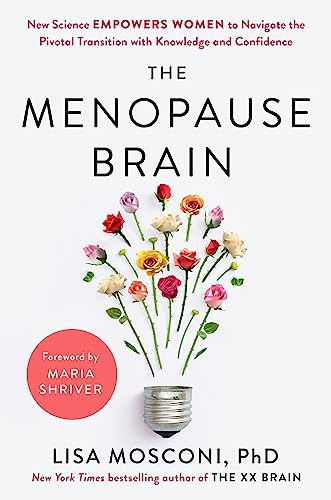
“The Menopause Brain” empowers women to navigate menopause with an emphasis on brain health by fusing the most recent scientific information with doable tactics. It highlights how important it is for sex hormones — especially estrogen — to operate properly in the brain and provides a guide on how to maintain optimal cognitive function after menopause.
Here’s a brief summary:
Introduction In “The Menopause Brain,” Dr. Mosconi addresses the often-misconstrued subject of menopause and its effects on cognitive performance. She debunks the misconception that menopause would always result in cognitive deterioration and offers a ground-breaking strategy for preserving and even improving brain function throughout this time of life.
The Myth of the Menopausal Decline This chapter dispels the myth that menopause will inevitably cause memory loss and cognitive deterioration. According to research cited by Dr. Mosconi, many women have a period of cognitive shift during menopause; nevertheless, this change is not indicative of a permanent decrease.
The Estrogen Advantage The science of estrogen’s effects on the brain is covered in detail in this chapter. By encouraging the development of new brain cells, boosting memory, and regulating mood, estrogen functions as a neuroprotective barrier.
The Brain Recharge: Understanding the Stages of Menopause The three phases of menopause — perimenopause, menopause, and postmenopause — are described in this chapter. Hormone fluctuations are a hallmark of each stage, and Dr. Mosconi describes how these changes in hormone levels might impact cognitive performance.
Beyond Estrogen: The Hormonal Orchestra This chapter recognizes the intricate interactions between various hormones during menopause, even though estrogen plays a major role. Thyroid, progesterone, and testosterone hormones also affect mood, sleep patterns, and cognitive abilities.
The Brain Fog Fix The typical complaint of “brain fog” during menopause is covered in this chapter. Dr. Mosconi pinpoints stress, irregular sleep patterns, and hormone changes as causes of brain fog. She offers doable methods for overcoming brain fog, like mindfulness exercises, cognitive exercises, and food adjustments.
You Might Also Like:
- 8 Books to Skyrocket Your Productivity (With Short Summaries)
- 7 Banned Books You Shouldn’t Read and Here’s Why
- 5 Books That Will Teach You High-Income Skills in 2024
- 13 Pieces of Advice From Adam Grant, From His New Best Seller Book
- Book Summary: “The Creative Act” by Rick Rubin
- Book Summary of “The Story of B,” by Daniel Quinn
